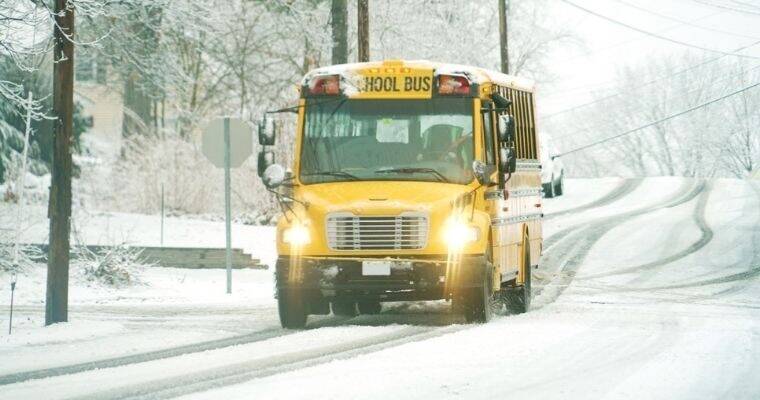When and How You Should Be Winterizing Your Bus

As the calendar continues to bring wintry weather, harsh conditions will slowly but surely continue to wreak havoc on your buses. When preparing for challenging roads, it’s good to make a checklist to prepare your bus for the cold and icy roads. Here is when and how you should be winterizing your bus.
Inspection Checklist
Before even putting your foot on the gas pedal, you’ll want to check these elements of the bus:
- Batteries – Bitter cold weather may cause a battery to malfunction, leaving you between a rock and a hard place if you cannot start the vehicle.
- Heater and Rear Heater – You don’t want to book a group of passengers and find out the heaters aren’t working. A quick check to ensure heat is coming from the vents is sufficient enough.
- Tires – Having quality tires is of the utmost importance when it comes to winter driving. You’ll want to look at the tread on the tires first because bald tires lead to severe slipping and sliding. Additionally, your tires’ air pressure in the winter is crucial. If a tire’s pressure is too low, it may lead to blowing it, which in turn could lead to a severe accident.
- Brakes – Icy road conditions cause drivers to make sudden stops, requiring your brakes to be top-notch. Rusted rotors and worn-out brake pads can cause serious issues if not dealt with sooner rather than later.
- Wipers and Fluid – With all the gunk that accumulates on your windshield, you’ll want to be equipped with a great set of wipers. Furthermore, double-checking the wiping fluid guarantees you that you won’t be driving blind if the sun hits your dirty windshield just right.
- Lights – Last but certainly not least, make sure your lights are working well. Also, don’t forget to turn them on if it’s snowing, even if it’s in the middle of the day.
Have Proper Insulation
Double-checking all the items above is something all drivers, bus or otherwise, should do before hitting the road this winter. But operating a bus lends to looking at some other things those everyday drivers don’t have to consider. For starters, a bus needs the proper insulation for its pipes and windows. Regarding the pipes, a frozen pipe may lead to a bathroom explosion, which is something no one will want to clean up. In terms of the windows, bus drivers can advise passengers to leave the windows closed during the winter to keep out the cold air.
Additional Heating Sources
Depending on your route, a driver and passengers may have a long journey ahead of them. Ergo, adding additional heating supplies keeps things toasty while the bus is running and keeps you safe if something catastrophic happens. Some smart investments include a heated blanket and a space heater.
These steps let you know when and how you should be winterizing your bus. For over 30 years, we at National Bus Sales have been experts in the field. So reach out today if you are looking for the best team to handle your new and used buses this winter!
LEARN ABOUT OUR BUSES
Activity Buses
Coach Buses
School Buses
Shuttle Buses
National Bus Sales Is Your Best Resource For Buying New and Used School Buses, Shuttles, Motorcoaches, Ultra Coachliners, Vans, and Special Needs Vehicles In Any State
Alabama | Alaska | Arizona | Arkansas | California | Colorado | Connecticut | Delaware | Florida | Georgia | Hawaii | Idaho | Illinois | Indiana | Iowa | Kansas | Kentucky | Louisiana | Maine | Maryland | Massachusetts | Michigan | Minnesota | Mississippi | Missouri | Montana | Nebraska | Nevada | New Hampshire | New Jersey | New Mexico | New York | North Carolina | North Dakota | Ohio | Oklahoma | Oregon | Pennsylvania | Rhode Island | South Carolina | South Dakota | Tennessee | Texas | Utah | Vermont | Virginia | Washington | Washington DC | West Virginia | Wisconsin | Wyoming
Copyright National Bus Sales, Inc. | All Rights Reserved | Report a web error to marketing@nationalbus.com




















